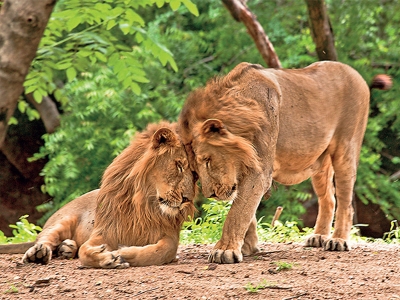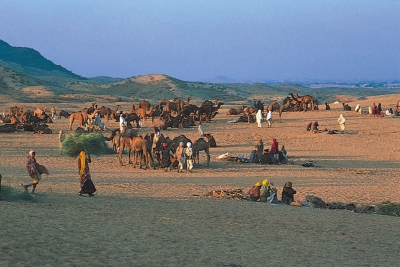Which forest is home to the largest number of wild Asiatic lions?

One of the very few places in the world for spotting lions in the wild, the Gir forest is home to the largest number of wild Asiatic lions. Located in southern Gujarat, the region was first declared a reserve forest, and eventually granted the status of a sanctuary in 1965. The Gir National Park and Wildlife Sanctuary is a dry scrubland spanning 1,400 sq.km. Around half of the forested area of the park is teak. The other half mostly has broad leaf and evergreen trees. The entire region is covered with dry deciduous forests, acacia scrub and grassland, and fed by rivers and reservoirs. Dominated by vegetation ideal for fauna, it is no surprise that over 250 species of birds are found in and around the area. This includes a whole variety from teals, kingfishers, nightjars and swifts to eagles, vultures, harriers, ibises and the oriental white-eye. While the lion is the most popular inhabitant of the Gir forest, the region also hosts the leopard, hyena, wild boar, spotted deer, nilgai, jackal, jungle cat, honey badger, porcupine etc. and reptiles such as Indian cobra and the marsh crocodile.
An unusual journey
The last time a tiger roamed Gujarat’s forest was in 1992. However, that changed in February 2019 when a school teacher saw a tiger crossing a road and took a photo on a phone. Having a big cat back in Gujarat was a huge moment of ecological victory. While the image went viral, the forest department got into action – camera traps were set up. Within a week, the tiger was spotted again; it was a young male. The same one that had started its journey from Ratapani Wildlife Sanctuary in neighbouring State Madhya Pradesh back in 2017. When it reached Gujarat, it had travelled about 300 km, one of the longest journeys for tiger. The hope was that the tiger could eventually reach Gir forest, where it would settle in a conductive environment full of prey. However, the tiger died within weeks – of starvation. When it roamed the forests in Gujarat, the State became the only one to host the lion, the tiger and the leopard. That joy turned out to be short-lived. However, the tiger also left behind hope that someday someone else from his species would follow him and perhaps ensure that the joy lasts forever.
Lion deaths
On June 10, 2020 Prime Minister Narendra Modi tweeted that “Population of the majestic Asiatic Lion, living in Gujarat’s Gir forest, is up by almost 29% Geographically, distribution area is up by 36%.” While this was comforting news, a report released by the government around the same time wasn’t. it said that as many as 92 lions had died in Gujarat’s Asiatic Lion Landscape (ALL) since January 2020. ALL includes Gir National Park and Sanctuary, among a few other regions. These numbers are worrying, especially due to the canine distemper virus (CDV) outbreak that occurred in 2018. The virus infection had claimed the lives of more than 20 lions in Gir forest division in a matter of weeks. While the 92 lions “reportedly died of unnatural causes” this year, the State government has denied the presence of CDV.
Picture Credit : Google
